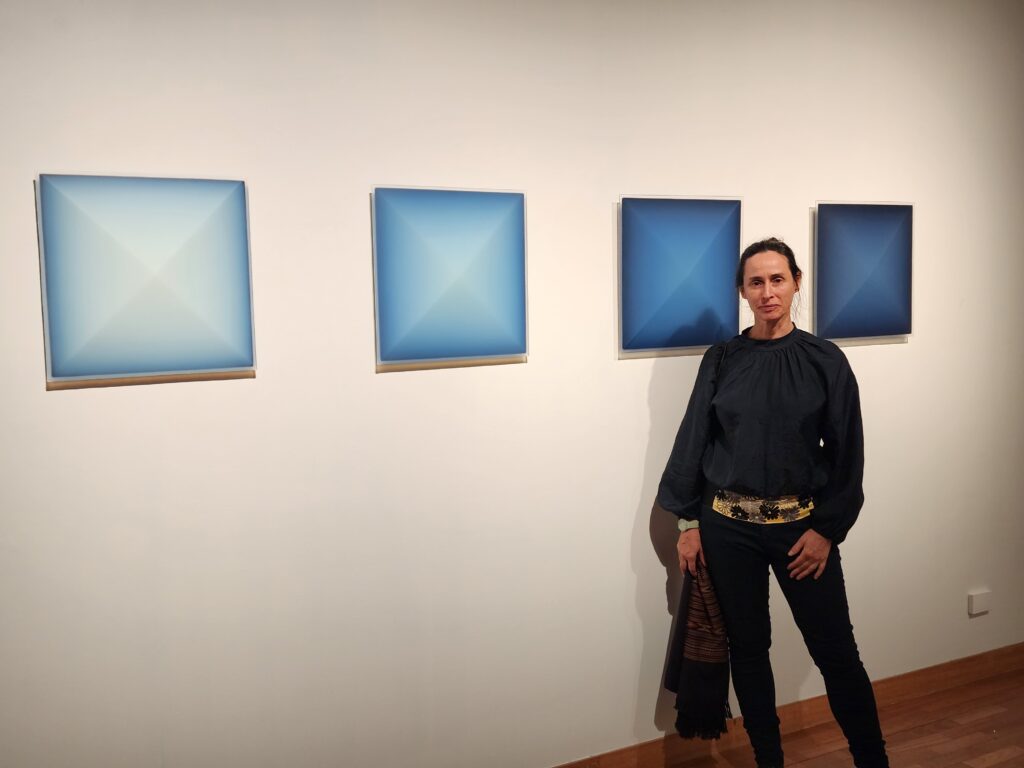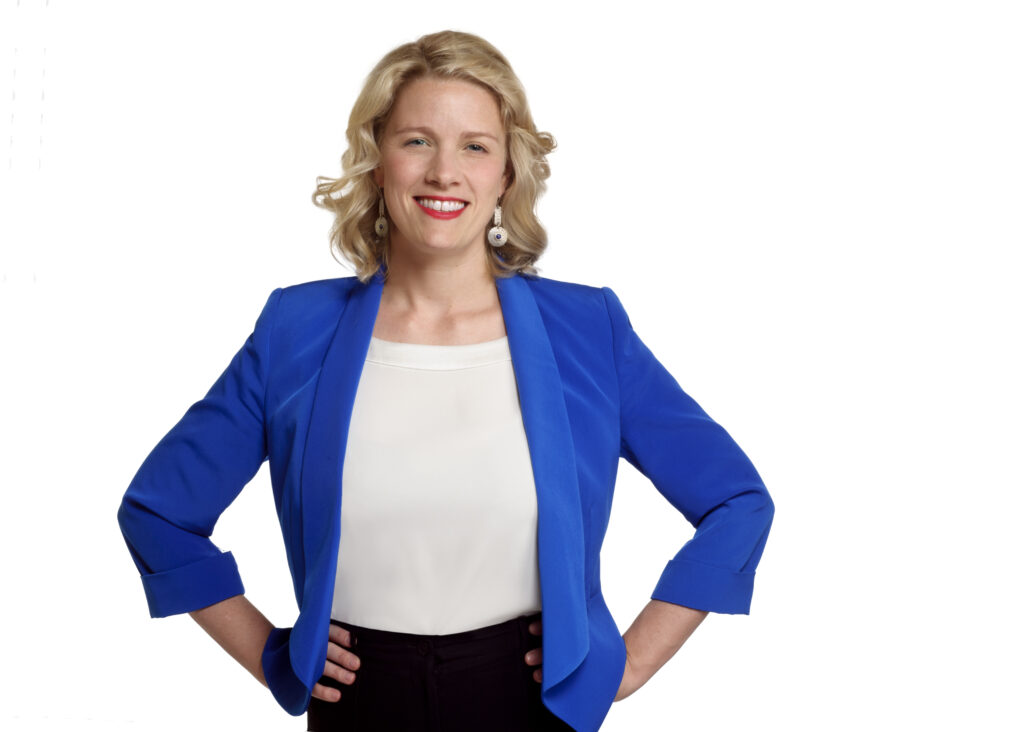It isn’t every day a visual artist says they want the audience to ‘listen’ to their work, but Jessica Loughlin is not an everyday artist. Jacquelene Pearson was privileged to chat with this internationally acclaimed glass maker whose work is currently on exhibition at the Gosford Regional Gallery.

Across Jessica Loughlin’s 20+ years of practice as a glass artist she has drawn her inspiration from her architect father’s passion for “building, making and especially light”, that she combines with a fascination for the horizon, particularly across the landscapes of South Australia’s salt lakes.
“One thing I love about some of those landscapes, and definitely the salt lakes in South Australia, is they are landscapes of light. Everything else is so reduced that light becomes the forefront, and you are left just observing light change and that is something I think a lot of us can relate to,” she said.
“I think I have always been fascinated with what it is that we are looking at and why is it that such big spaces affect us and definitely that sense of calm and a sense of quiet that is in all my experiences of those places. You are not being told, there is no chatter. You are being taken into a realm where there is quietness in the mind.
“I am often interested in looking into that distance and the idea of distance or the horizon line. Is that a real space? We look towards that vision, but it is not a place, we can never get into that distance and yet looking into that distance is definitely an important part of my life.”
Loughlin was still at her home in Adelaide when she spoke with The Point and she shared: “I am sitting here now looking out into that blue horizon. We are living in a very high house and a very steep block so I am always questioning what we are seeing.
“A successful piece for me is when it encapsulates the feelings that I have when I am out on the salt lakes, the sense of awe. It doesn’t come through in every piece but I strive to achieve that in my practice.
“That is something you can’t plan for It just happens when all those pieces come together. It has to have that energy that thing that comes very much from the self-conscious.
“I continuously feed my practice with being in the landscape, reading, drawing, or experimenting with pieces of art. It is almost creating a library of influences.”
Jessica Loughlin describes working with glass as a “long process” – some pieces can take months to make.
She says there are three bodies of work in the current travelling exhibition that is at the Gosford Regional Gallery until Sunday, 4 June.
“There is one room where the pieces are made by opaline glass – a glass that behaves very similarly to light in the sky. It splits light into warm and cool tones. They change radically with light. In some lights they look almost orange and very colourful. In other light they look a milky blue. The way they split light is the reason why the sky is blue,” she explains.
“I almost see them as vessels for noticing that light change. That reflects that kind of slowness of time that you might experience when you are in that landscape looking at light change.”
It is in that context that Loughlin explains that her work is an attempt to create spaces where people can listen.
“I feel very passionate that my work is about listening.”
She mostly uses two processes in her work.
“One is quite classic in some ways. I start off with compatible coloured sheet glass. Once I’ve designed what I want to make I cut out the pieces to the shape I want to make. I put it in the kiln and that glass melts together. I take it out of the kiln and I add more pieces or I have a mold that shapes the glass.
“Some pieces can take one to five firings. Then I grind the surface of the glass, that can be kind of carving it using diamond tools and can go from shaping down to a fine surface or a polish depending on the design. I use diamond saws, lathes, orbital grinders and they are all wet because the heat will cut the glass and because of dust.
“That process is quite exacting. The pieces in the kiln can take days for one firing. There is another process I use which is a little less exacting. I start with a sheet of float glass, industrial window glass and I also grind up this very dense glass block I have into a very fine powder, it is almost like milk. Then I move that powder across the surface of the glass with water using a hose as if it is a brush. Whilst I’ve got the desired effect, I let the water evaporate which takes about a day and then I put that in the kiln for about a day to fuse the powder to the glass. Then I take it out and I can do another layer. This work looks very cloudy whereas the other work is fusing and exacting sculptural work.
Jam Factory icon
The 48-year-old has been based in Adelaide, which she describes as a glass town, since 1998. Her current exhibition is being toured by Adelaide’s famous Jam Factory as an Icon.
“The Jam Factory is an internationally unique institution and that it because it takes part of its model, almost like a European model, where students can take a traineeship and through that traineeship they can really skill up and spend a lot of time with their material.
“That has in turn made Adelaide quite a bit of a hub for glass artists and therefore there is a critical community for the art.
“My process is not glass blowing, it is called kiln forming, and involves molding and processing in the kiln. I am in a glass town but surrounded by glass blowers.
“I am really one step removed from the Jam Factory because I never went there as a student however, it is still such an important institution and I have relationships with them in other ways. They are a supporter of design art and crafts and Brian Parks, the director, invited me to be one of the Jam Factory icons.
“The icon series celebrates excellence in craft and offers a maker an opportunity to have almost like a survey exhibition so normally they are like middle career artists and that gives them the opportunity to work on the exhibition for a couple of years and it comes along with a monograph book published by Wakefield Press and that is an opportunity to summarise my career to date.”
We return to our earlier discussion about influences and foundations for her practice.
“My dad was an architect and I was much influenced by him and his passion for building and making and specifically light.
“Then I was more interested in product design, industrial design because of the way a beautiful object can just make your day feel fabulous. We surround ourselves with things we make. There is a utilitarian purpose about them but they are also beautiful.
“We are so influenced by our environment. I am always interested in the beauty and non-utilitarian purpose of the objects we surround ourselves with.
“I started using actual materials rather than drawing. I started with glass because glass holds light and I love light because of my father. Glass is such a gorgeous material.”
Jessica Loughlin has always had a clear sense of direction when it comes to her career.
“I took a course at the Meat Market craft centre in Melbourne when I was still at school. That was with kiln work and from there I went straight from high school to the Canberra School of Art – an internationally renowned art school that only took in four or five students each year, there was a level of excellence there that became very obvious when I visited.
“We were learning in an international context.”


